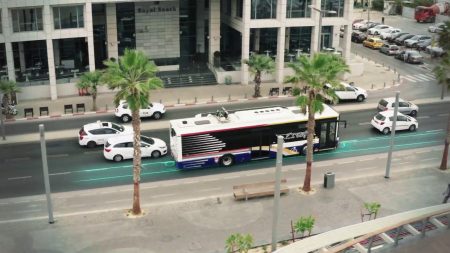April 20, 2019 – An Israeli company, ElectReon Wireless, founded in 2013, is changing the future of electric vehicle (EV) adoption in Sweden through its invention of recharging smart road infrastructure.
What’s involved?
Laying a thin strip of specially designed copper coils under the road surface creates the energy source that is wirelessly transmitted to any EV equipped with an onboard receiver.
The Swedish Transport Administration picked a 1.6 kilometer (1 mile) section of road running from the airport on the island of Gotland for the first install site. If the trial succeeds it represents the world’s first dynamic electric road system. A truck and a bus will be equipped with the onboard receiver enabling electricity to power the two vehicles. The bus is a fully-functioning public shuttle.
The initial cost is estimated at $12.5 million USD with the Swedish government picking up almost 80% of the tab.
For Sweden’s Transport Administration this is seen as the first step in a plan to rollout recharging infrastructure for 2,000 kilometers (1,200 miles) of roads at a cost of $3 billion USD.
In an April 14, 2019 press release, Jan Pettersson, Program Manager at the Transport Administration, stated, “We, the Swedish Transport Administration, believe that electric roads are an important contribution to reducing CO2 emissions from heavy transportation…Demonstrating and evaluating new technical solutions for electric routes is one of our most important steps in our long-term plan for a potential roll-out of electrified routes on the heavy road network in Sweden.”
What makes ElectReon an attractive choice for Sweden’s road transportation network?
Embedding the power source to continuously charge heavy vehicles such as long-haul trucks means that there is little need to place on board large battery packs. And nor is there a need to put a large number of recharge stations along the routes since the road serves the purpose. With full deployment on main Swedish roads, it eliminates the range anxiety issues once and for all, and should encourage the next generation of EVs that will be lighter and will operate with much smaller battery packs. There will be no need for recharge downtime, and Sweden’s air in urban centers will be far cleaner.
A similar project is undergoing a pilot test in the municipality of Tel Aviv-Jaffa in Israel. The operator, the Dan Bus Company will provide the shuttle bus used on Gotland’s road.
Can a modified vehicle drive on a non-electrified road?
EVs equipped with ElectReon receivers will still have onboard storage batteries which means they can continue to operate even on a non-electrified road. A network of electrified main routes, therefore, can serve to keep a fleet of buses and trucks in continuous operation even when off the ElectReon grid.
The company plans to install its infrastructure first in cities under main bus routes and commercial service roads. Bus companies and trucking firms are seen as the first operators to have ElectReon receivers installed under their chassis. Following adoption by these first operators, ElectReon is looking to put its technology into on-demand service vehicles and autonomous ones.
ElectReon calls cities with its road infrastructure in place, E-cities, very different places than the urban areas we know today. With full implementation, there will be no gasoline and diesel refueling stations, no electric charging stations, and much cleaner air because of fewer greenhouse gas emissions.









